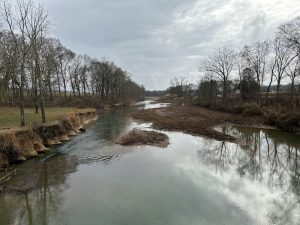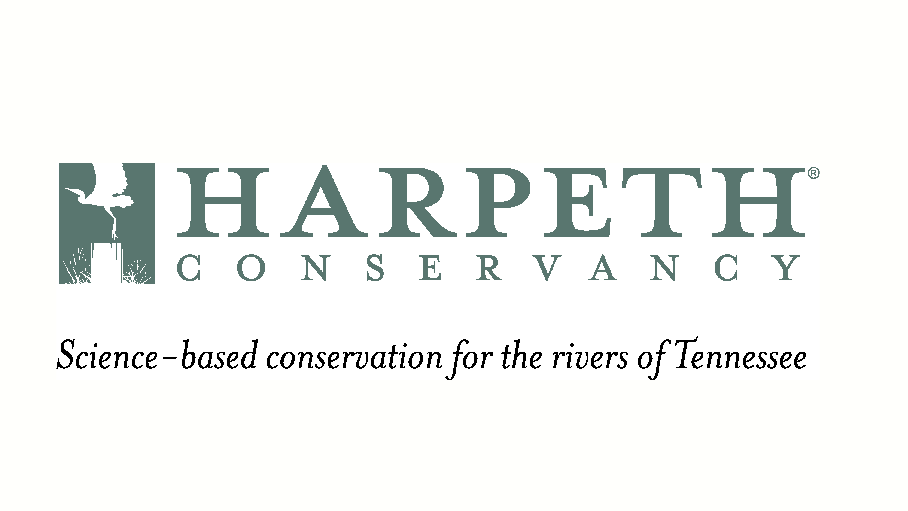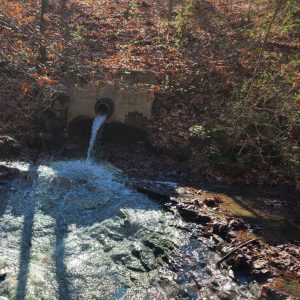Harpeth Conservancy has been concerned about TDEC’s preparation of the TMDL for at least two reasons: (1) The law is clear that TDEC must establish a WQBEL now and cannot wait for the TMDL process to be completed to bring the river into compliance with water quality standards; and (2) there are concerns about the thoroughness and objectivity of the TMDL as well as TDEC’s conduct the process.
Before releasing the Draft Permit for public comment in September 2016, TDEC had prepared an August 29, 2016 draft of the permit would have required Franklin to reduce phosphorus discharges in to the river from its current plant (63,393 lbs./year) to the new plant (48,545 lbs./year). TDEC included the lower limit for the new plant because, presumably, its new 16 MGD plant could do better. Instead, in the September 20, 2016 Draft Permit, these lower limits were eliminated in favor of allowing both its old and new plants to discharge more than twice the amounts they are actually putting into the river. In place of even “holding the line” on discharges, the Permit deferred such issues and relies on the TMDL to “fix everything.”
In an e-mail exchange between Franklin and TDEC on September 16, 2018, Franklin stated:
While we’ve been assured from the beginning that the permit won’t prejudge the TMDL I have a lingering concern should the TMDL result in less stringent limits. The feedback thus far has been that TDEC has the potential to establish less stringent limits. This concept has been one of the compelling reasons for the City’s participation in the TMDL process. If I remember, I think Patrick was going to verify if is and didn’t know if he had a chance to see if the rules had provisions to do so. To avoid any arguments in the future we would like for it to be explicitly stated in the permit.
The language Franklin requested was included in the final Permit, which now states:
This constitutes an interim [phosphorus discharge] limitation until a new TMDL is finalized and approved by EPA, at which time the limitation will be revised to be consistent with the assumptions and requirements of the new wasteload allocation. This may result in either a decreased or an increased limitation…
How can a TMDL result in Franklin getting permission to discharge more phosphorus when TDEC’s own 303(d) list has listed the river as impaired at current discharge levels for so many years?
Further, although the TMDL was announced on July 6, 2015, now over four (4) years ago, critical initial tasks for the TMDL have still not been done. For example, a work plan – an overall plan for the performance of the TMDL and the sampling and monitoring of the river on which the plan is supposed to be based – is needed for a successful TMDL, and TDEC has not provided any substantive work plan to date. As Michael Corn, principal of AquAeTer, noted:
“A Work Plan should be developed for conducting the 2018 studies. It is impossible to conduct a waste assimilative capacity study and then conduct the subsequent modeling if a definitive plan is not developed and in place before the project begins. This is a fundamental part of any scientific study.”
— Recommendations for the 2018 Waste Assimilative Capacity Study of the Harpeth River for Establishing Defensible Wasteload Allocations (WLAs) (available HERE)
Moreover, the City of Franklin and Harpeth Conservancy jointly requested that TDEC prepare a work plan in January 2018, and TDEC promised to do one in the February 2018 TMDL meeting (joint request available HERE).
To date, there is still no substantive work plan with technical specifications or target deadlines. TDEC has, however, created a webpage for the Harpeth River Watershed TMDL Development (available HERE).
The Harpeth Conservancy is now involved in stakeholder-led TMDL development for the Harpeth River. CLICK HERE to learn more about the Harpeth Conservancy’s recommendations for a technical work plan, leadership committee, and technical advisory panel.
In short, the permit violated numerous provisions of state and federal law. Fundamentally, it did not, but was required to, establish discharge levels that protect the river from further degradation and set the river on the path towards restoration – towards removal from its status as impaired by phosphorus pollution, with all the challenges to public health and the environment that result from that impairment.
Harpeth Conservancy is pleased to report that efforts to include an action level in the Franklin permit are having an effect. To read more about Franklin’s progress in reducing phosphorus discharges, CLICK HERE.
















